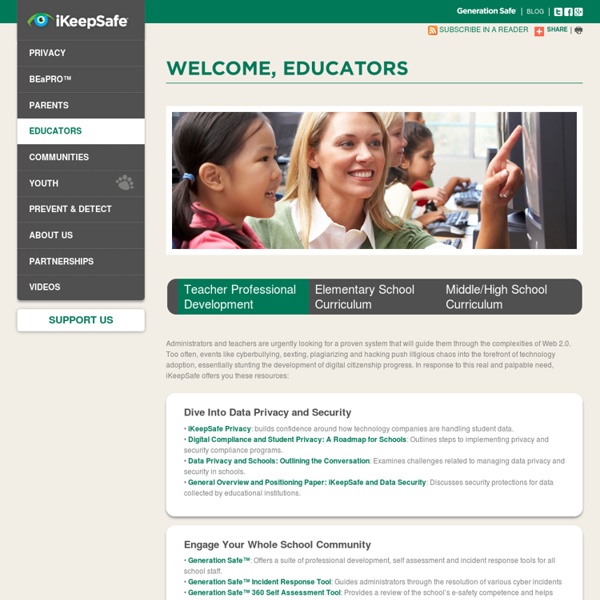Ikeepsafe Welcome, Educators!

Welcome - Safer Internet Day
Safer Internet Day (SID) is organised by Insafe in February of each year to promote safer and more responsible use of online technology and mobile phones, especially amongst children and young people across the world. Safer Internet Day 2014 was celebrated on 11 February 2014, with the strapline of “Let’s create a better internet together”. The day was a great success - we are busy compiling the results, and will bring you a roundup soon. This website showcases some of the exciting activities and events that took place to celebrate the day. For further information, read the summary or the full public report on Safer Internet Day 2014 activities and successes. And while SID 2014 may have now passed, we are already busy preparing for Safer Internet Day 2015.
Cyber Bulling by amanda todd on Prezi
Cyber Safety - Internet Safety Tips To Stay Safe Online : InformED
It's always good to be cautious while on the internet. There are people in the cyber world who want to do harm to you or your computer. These are some good tips to keep in mind while you are surfing: Be careful about what you put on the web. It's on there forever and can be used to trace back to you at any time. Keep track of who you interact with on the internet. Some people may not be who they seem to be. Know that privacy is just an illusion. Even personal information on social networks can be easily recovered by anyone. Don't open any links in emails or chat rooms that look suspicious or unfamiliar. Also, never open any strange files that your computer may have downloaded from an email or a website. The best way on the internet to keep in touch with friends, sharing pictures and memories, and meet new people is by using a social network. Some of the most popular social networks as of today are: It may be unnerving to hear this but you virtually have no privacy on a social network. You should:
The CRAAP test - Evaluating Web Resources - LibGuides at North Carolina Agricultural & Technical State University
Currency: the timeliness of the information When was the information published or posted?Has the information been revised or updated?Is the information current or out-of date for your topic?Are the links functional? Relevance: the importance of the information for your needs Does the information relate to your topic or answer your question? Authority: the source of the information Who is the author/publisher/source/sponsor? Accuracy: the reliability, truthfulness, and correctness of the content, and Where does the information come from? Purpose: the reason the information exists What is the purpose of the information? By scoring each category on a scale from 1 to 10 (1 = worst, 10=best possible) you can give each site a grade on a 50 point scale for how high-quality it is! 45 - 50 Excellent | 40 - 44 Good | 35 - 39 Average | 30 - 34 Borderline Acceptable | Below 30 - Unacceptable Note: the CRAAP test was developed by librarians at CSU Chico.
Related:
Related:



